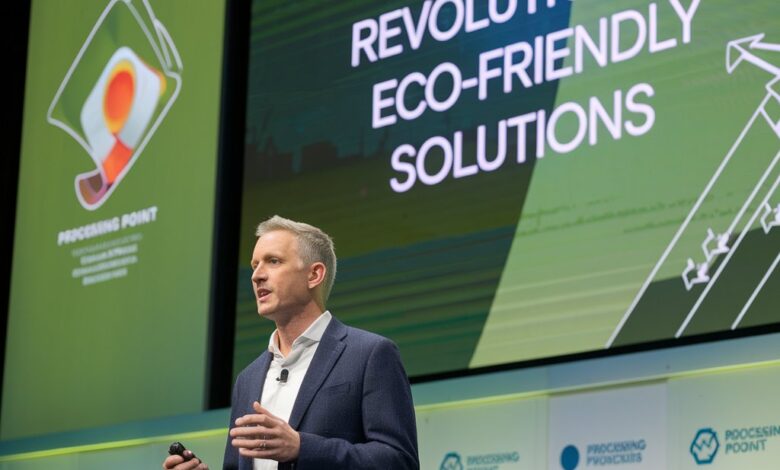Matthew Benner Processing Point: Revolutionizing Eco-Friendly Solutions

Introduction to Matthew Benner Processing Point
The term Matthew Benner Processing Point has been making waves in industries focused on sustainability, processing technology, and eco-friendly innovation. This concept refers to a pivotal approach in transforming the way raw materials are processed, offering practical and sustainable solutions that minimize environmental impact. By embracing the principles of responsible production, the Matthew Benner Processing Point plays a crucial role in reshaping industries worldwide. This article delves deeper into how this system operates, its impact on the environment, and its relevance in modern processing solutions.
Table of Contents
What is the Matthew Benner Processing Point?
The Matthew Benner Processing Point is a progressive approach to industrial processing that prioritizes eco-friendly techniques and sustainable practices. It involves a comprehensive system designed to enhance efficiency while reducing waste, energy consumption, and harmful emissions. By adopting this processing point, industries can ensure that their production processes are not only effective but also environmentally responsible.
One of the core principles behind the Matthew Benner Processing Point is the use of green technologies to optimize raw material processing. It pushes industries toward adopting renewable energy sources, reducing carbon footprints, and utilizing recyclable materials whenever possible. This shift toward sustainability doesn’t just benefit the planet; it also results in long-term economic advantages for companies by streamlining processes and reducing costs related to waste management.

Key Features of Matthew Benner Processing Point
- Eco-Friendly Technologies
The cornerstone of the Matthew Benner Processing Point is its use of eco-friendly technologies. These technologies minimize environmental harm and promote sustainable practices. Whether it’s through advanced filtration systems, energy-efficient machinery, or closed-loop recycling processes, the focus remains on reducing the negative effects of industrial processing on the planet. - Energy Efficiency
Another standout feature of the Matthew Benner Processing Point is its emphasis on energy efficiency. By integrating renewable energy sources such as solar, wind, or biomass, businesses can reduce their dependence on non-renewable resources, significantly cutting down on their energy consumption. This energy-efficient approach not only lowers operational costs but also contributes to global efforts to combat climate change. - Waste Reduction and Recycling
Waste reduction plays a major role in the Matthew Benner Processing Point. It encourages industries to rethink how waste is managed and promotes the concept of circular economies, where waste is either reused or recycled to create new products. This practice helps reduce the amount of waste that ends up in landfills, contributing to a cleaner and more sustainable world. - Sustainable Sourcing
Sustainable sourcing is another important component of the Matthew Benner Processing Point. The focus is on using raw materials that are responsibly sourced, ensuring that the materials come from renewable or recyclable sources. This approach reduces the depletion of natural resources and encourages companies to adopt sustainable supply chains, benefiting both businesses and the environment. - Waste-to-Energy Processes
The integration of waste-to-energy technologies is another feature of the Matthew Benner Processing Point. This process involves converting waste materials into usable energy, which can then be used to power manufacturing operations. By turning waste into a resource, companies can close the loop in their production processes, further enhancing sustainability.

Benefits of Adopting the Matthew Benner Processing Point
- Environmental Benefits
The most significant advantage of adopting the Matthew Benner Processing Point is the positive impact on the environment. By minimizing energy consumption, waste generation, and harmful emissions, industries can play a crucial role in reducing their ecological footprint. This is essential in the fight against climate change and environmental degradation. - Cost Savings
While transitioning to eco-friendly practices may require an initial investment, the long-term cost savings are significant. With reduced energy consumption, waste management costs, and raw material usage, businesses can expect lower operational costs. Moreover, industries that adopt sustainable practices may qualify for government incentives or tax breaks designed to encourage environmental responsibility. - Enhanced Brand Reputation
Consumers today are increasingly aware of environmental issues, and many prefer to support brands that prioritize sustainability. By incorporating the Matthew Benner Processing Point, companies can enhance their reputation as environmentally responsible organizations. This not only attracts eco-conscious consumers but also strengthens relationships with stakeholders, partners, and investors. - Regulatory Compliance
As governments around the world continue to enforce stricter environmental regulations, companies that embrace eco-friendly practices are better positioned to comply with these laws. The Matthew Benner Processing Point helps businesses stay ahead of regulatory requirements, reducing the risk of fines or penalties for non-compliance. - Innovation and Market Competitiveness
Embracing sustainability through the Matthew Benner Processing Point opens the door to innovation. As industries adopt new technologies and processes, they can explore new ways to improve efficiency and meet the growing demand for eco-friendly products. This fosters competitiveness in the market, allowing companies to differentiate themselves as leaders in sustainability.

Why Should Industries Adopt Matthew Benner Processing Point?
Industries across the globe are under increasing pressure to adopt sustainable practices, not only from regulatory bodies but also from consumers who are demanding more environmentally friendly options. The Matthew Benner Processing Point offers a comprehensive solution for businesses looking to make a meaningful difference. By reducing waste, cutting down on energy use, and promoting eco-friendly sourcing, businesses can contribute to the planet’s well-being while simultaneously reaping economic rewards.
In today’s fast-paced, environmentally conscious world, companies that fail to adopt sustainable practices risk falling behind. The Matthew Benner Processing Point allows industries to align their operations with modern environmental expectations, ensuring that they remain relevant and competitive.
Real-World Applications of Matthew Benner Processing Point
The Matthew Benner Processing Point has seen implementation in various industries, from manufacturing to agriculture. For instance, in the food processing industry, this system helps reduce food waste, optimize resource use, and incorporate renewable energy sources. Similarly, in the textile industry, it encourages the use of sustainable fabrics, water-efficient dyeing methods, and waste recycling techniques. By showcasing these real-world applications, we can see how the Matthew Benner Processing Point can be adapted across different sectors to improve sustainability outcomes.
Also read: Influencersginewuld Mastering the Power of Authentic, Eco-Friendly Marketing”
Conclusion: A Sustainable Future Through the Matthew Benner Processing Point
In conclusion, the Matthew Benner Processing Point is a transformative approach to processing that incorporates sustainable practices, eco-friendly technologies, and efficiency enhancements. Its ability to reduce environmental impact while providing cost savings and innovation opportunities makes it a highly valuable model for modern industries. As businesses strive to meet sustainability goals and reduce their carbon footprints, the Matthew Benner Processing Point offers a clear path forward. By adopting this model, companies not only contribute to a more sustainable future but also secure their position as leaders in the eco-conscious marketplace.



